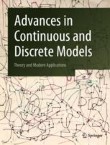
Photo from archive.org
A disastrous coronavirus, which infects a normal person through droplets of infected person, has a route that is usually by mouth, eyes, nose or hands. These contact routes make it… Click to show full abstract
A disastrous coronavirus, which infects a normal person through droplets of infected person, has a route that is usually by mouth, eyes, nose or hands. These contact routes make it very dangerous as no one can get rid of it. The significant factor of increasing trend in COVID19 cases is the crowding factor, which we named “crowding effects”. Modeling of this effect is highly necessary as it will help to predict the possible impact on the overall population. The nonlinear incidence rate is the best approach to modeling this effect. At the first step, the model is formulated by using a nonlinear incidence rate with inclusion of the crowding effect, then its positivity and proposed boundedness will be addressed leading to model dynamics using the reproductive number. Then to get the graphical results a nonstandard finite difference (NSFD) scheme and fourth order Runge–Kutta (RK4) method are applied.
Journal Title: Advances in Difference Equations
Year Published: 2020
Link to full text (if available)
Share on Social Media: Sign Up to like & get
recommendations!